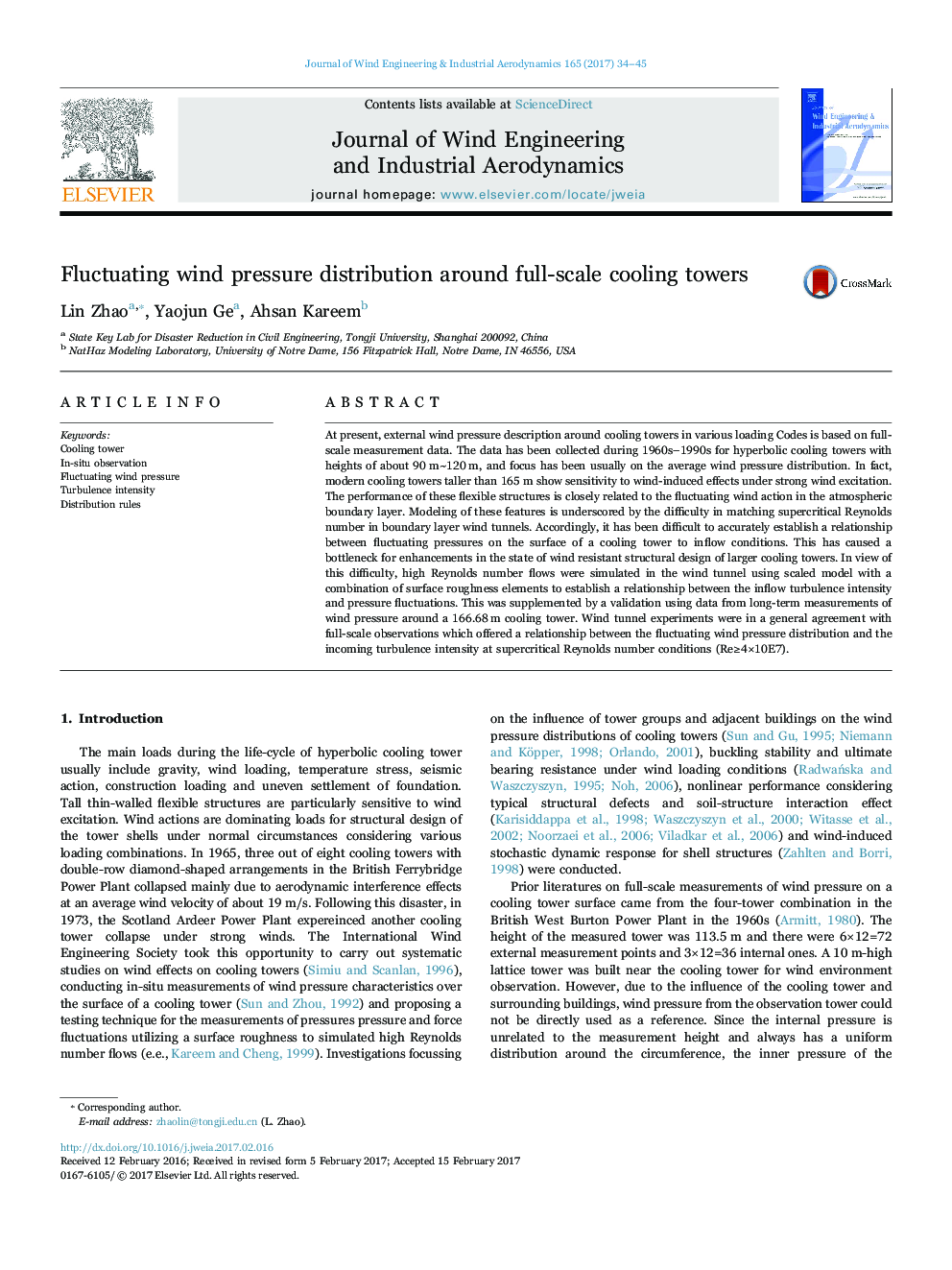| Article ID | Journal | Published Year | Pages | File Type |
|---|---|---|---|---|
| 4924908 | Journal of Wind Engineering and Industrial Aerodynamics | 2017 | 12 Pages |
Abstract
At present, external wind pressure description around cooling towers in various loading Codes is based on full-scale measurement data. The data has been collected during 1960s-1990s for hyperbolic cooling towers with heights of about 90 m~120 m, and focus has been usually on the average wind pressure distribution. In fact, modern cooling towers taller than 165 m show sensitivity to wind-induced effects under strong wind excitation. The performance of these flexible structures is closely related to the fluctuating wind action in the atmospheric boundary layer. Modeling of these features is underscored by the difficulty in matching supercritical Reynolds number in boundary layer wind tunnels. Accordingly, it has been difficult to accurately establish a relationship between fluctuating pressures on the surface of a cooling tower to inflow conditions. This has caused a bottleneck for enhancements in the state of wind resistant structural design of larger cooling towers. In view of this difficulty, high Reynolds number flows were simulated in the wind tunnel using scaled model with a combination of surface roughness elements to establish a relationship between the inflow turbulence intensity and pressure fluctuations. This was supplemented by a validation using data from long-term measurements of wind pressure around a 166.68 m cooling tower. Wind tunnel experiments were in a general agreement with full-scale observations which offered a relationship between the fluctuating wind pressure distribution and the incoming turbulence intensity at supercritical Reynolds number conditions (Reâ¥4Ã10E7).
Related Topics
Physical Sciences and Engineering
Energy
Renewable Energy, Sustainability and the Environment
Authors
Lin Zhao, Yaojun Ge, Ahsan Kareem,
